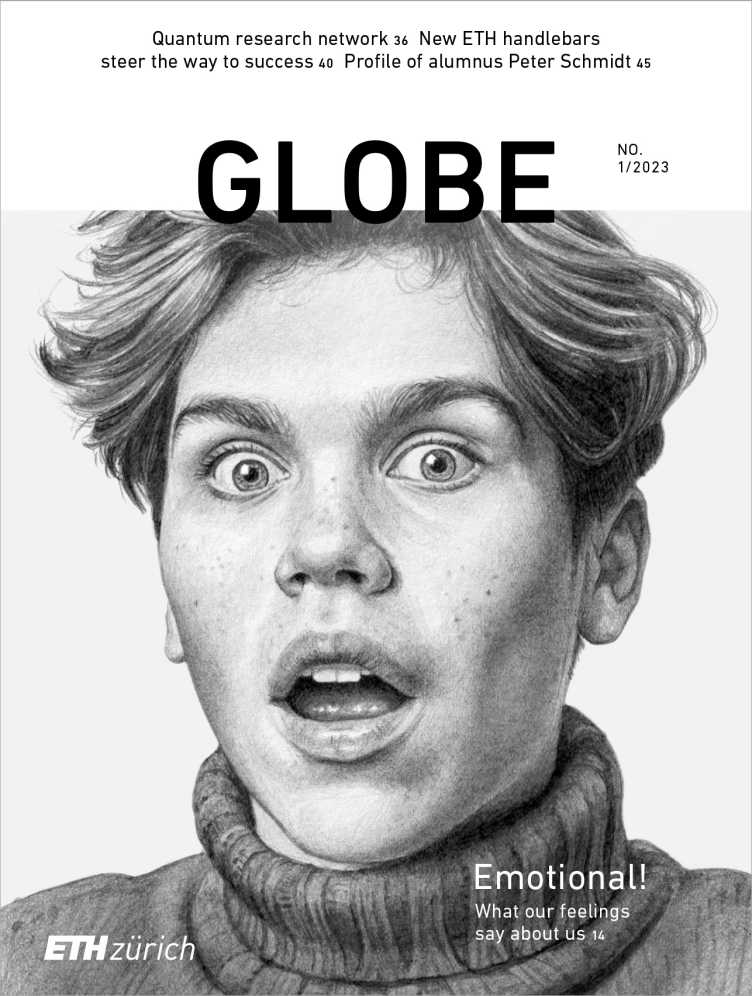
At night
Why researchers should not only draw on reason but also on their emotions. An essay by Michael Hagner.
Recently, Nature caused quite a stir with an article that suggested science is becoming less disruptive. According to the authors, the number of groundbreaking scientific discoveries has dwindled steadily over the past 60 years, despite ever-increasing funding; instead, more and more research merely seeks to refine or extend our existing knowledge.
There is some debate as to whether the results of the study, which were based on the digital analysis of 45 million academic articles and 3.9 million patents, may also be open to a different interpretation. Indeed, one might argue that the very concept of the disruptive scientific breakthrough is overrated and caters more to the idea of science as a story of heroic endeavour than to the daily practice of science in the lab.
Even if one takes that view, however, the notion of science as a buccaneering tale of disruption is not without its merits. After all, why would any young person embark on a risky career that requires hard work and offers no guarantee of financial stability if all they are going to do is plug some minor gap in the research literature? Obviously not everyone can win a Nobel Prize, but surely anyone who opts to become a researcher will at some point have felt the urge to try out something completely new and upend the existing scientific consensus. Yet giving in to that urge can be a frustrating experience, either because nature, as studied in the lab, stubbornly refuses to yield – initially, at least – anything but the most meagre, contradictory or baffling results, or because eminent figures in the field – and indeed those who hold the purse strings – consider this research to be ultimately futile.
Faced with this situation, researchers must summon up every ounce of determination, courage, tenacity and speculative imagination and hold tight to their gut feeling that scientific treasure may lie exactly where the prevailing orthodoxy refuses to tread. And thus we find ourselves plunging into the realm of emotion; after all, rational thought alone would never persuade us to embark on a journey that could potentially expose us to such epistemic uncertainty or turn us into a social outcast! One person who has dared to take this less travelled road is Hungarian molecular biologist Katalin Karikó, whose research into mRNA unwittingly laid the foundations for the COVID-19 vaccine. During her time at the University of Pennsylvania, Karikó failed to obtain a tenured professorship and was eventually forced to leave. But she refused to become discouraged.
The fact is that breakthroughs in knowledge often rely on emotionally rooted characteristics such as boldness and humility, perseverance and determination. Passions such as curiosity and amazement also belong in this context. Granted, these latter two qualities are universal traits that are relevant to numerous aspects of life. But delve into the history behind these terms and we find that amazement and curiosity were two of the most important characteristics of the 17th-century natural scientists, whose findings paved the way for the Scientific Revolution. It was this that led science historian Lorraine Daston to define curiosity and amazement as cognitive passions that have been essential in advancing scientific knowledge and, no doubt, still are today.

“Breakthroughs in knowledge often rely on emotionally rooted characteristics such as boldness and humility, perseverance and determination.”Michael Hagner
However important such emotionally conditioned behaviours might be to scientists, it is nonetheless tempting to argue that rational criteria alone will surely hold sway once they actually roll up their sleeves and embark on their chosen course of theoretical or applied research. After all, philosophers and scientists have spent the past 200 years issuing any number of edicts that have one goal in common: to drive out not just emotions, but any subjectivity at all from academic work. A good example is the idea of mechanical objectivity of the 19th century, in which technical methods of visualisation such as photography, spectrography and instruments to measure bodily functions were celebrated as advances that would exclude the notoriously unreliable subjective intervention of the researcher.
The goal of such methods was to expunge personal idiosyncrasies from scientific endeavour – in other words, to eliminate that rich tapestry of human emotions that includes the likes and dislikes, beliefs, prejudices, hopes and craving for recognition peculiar to each and every one of us. The ascetic virtues are undoubtedly a prerequisite for successful and reliable research, yet their presence alone is not enough – a necessary condition is not always a sufficient one. Throughout its history, science has shown us that idiosyncratic beliefs, aesthetic decisions and curious hunches all play a role in research; in fact, new avenues of knowledge can hardly be explained without them.
There are even those in the scientific community who have highlighted these irrational components. One example is the molecular biologist and Nobel Prize-winner François Jacob, who proposed a distinction between “day science” and “night science”. By day, everything is clear and rational, every line of reasoning assumes a logical progression, and science is like a machine in which one gear automatically meshes with the next. This is the side of science that is usually presented to politicians, funding bodies and the public. Yet they know nothing of the night, when science wanders blindly, harbours doubts, questions its every move, and lurches into blind alleys, possessed of a vague and anxious hope that it will stumble across a solution. In this state, thought processes cling much closer to intuition and feeling than to logical reasoning. Many such nocturnal activities never even see the light of day and are simply chalked up as failed experiments. Even so, Jacob argues, night science is an indispensable workshop of possibility that allows us to explore new scientific avenues. These will, of course, ultimately have to prove themselves by day – but without those tortuous night-time wanderings, there would be nothing worth seeing in the daylight at all.
Another scientist – physical chemist and social scientist Michael Polanyi – introduced the concept of tacit knowledge to explain our inability to express and codify every step in a creative activity. In addition to our rational thought processes, there is always an implicit form of knowledge that helps us gain experience and insights. Polanyi regarded tacit knowledge as a kind of master key that could unlock the skills of an artist, the mastery of an experienced medical diagnostician, or the creative power of a scientific researcher. And he argued that renouncing this kind of knowledge would have dire consequences: “But suppose that tacit thought forms an indispensable part of all knowledge, then the ideal of eliminating all personal elements of knowledge would, in effect, aim at the destruction of all knowledge.”
Since night science remains invisible in day science – just as implicit knowledge remains invisible in explicit knowledge – it is not possible to pin down either of these phenomena and their corresponding emotions even in a digital analysis of 45 million scientific articles. Nonetheless, if a problem with groundbreaking research does exist, then it is certainly worth making another careful examination of the conditions that favour breakthroughs in science. This will not give us a magic formula, but it may well encourage scientists to draw not only on reason, but also on their emotions. And perhaps to understand that original research requires more than just two gears meshing smoothly together.
About
Michael Hagner is Professor of Science Studies in the Department of Humanities, Social and Political Sciences at ETH Zurich.
Globe Emotional!

This text appeared in the 23/01 issue of the ETH magazine Globe.
DownloadRead whole issue (PDF, 5.4 MB)
